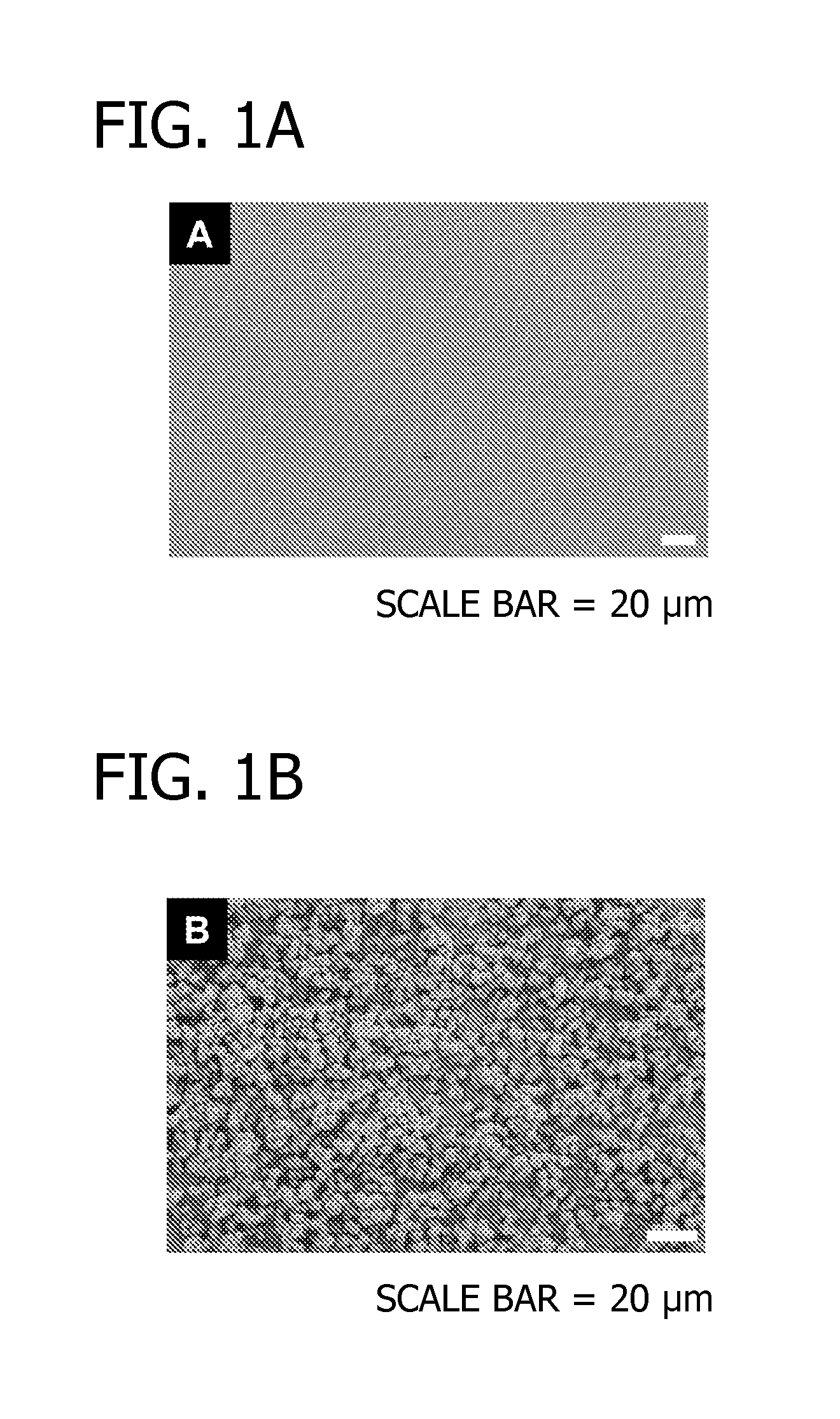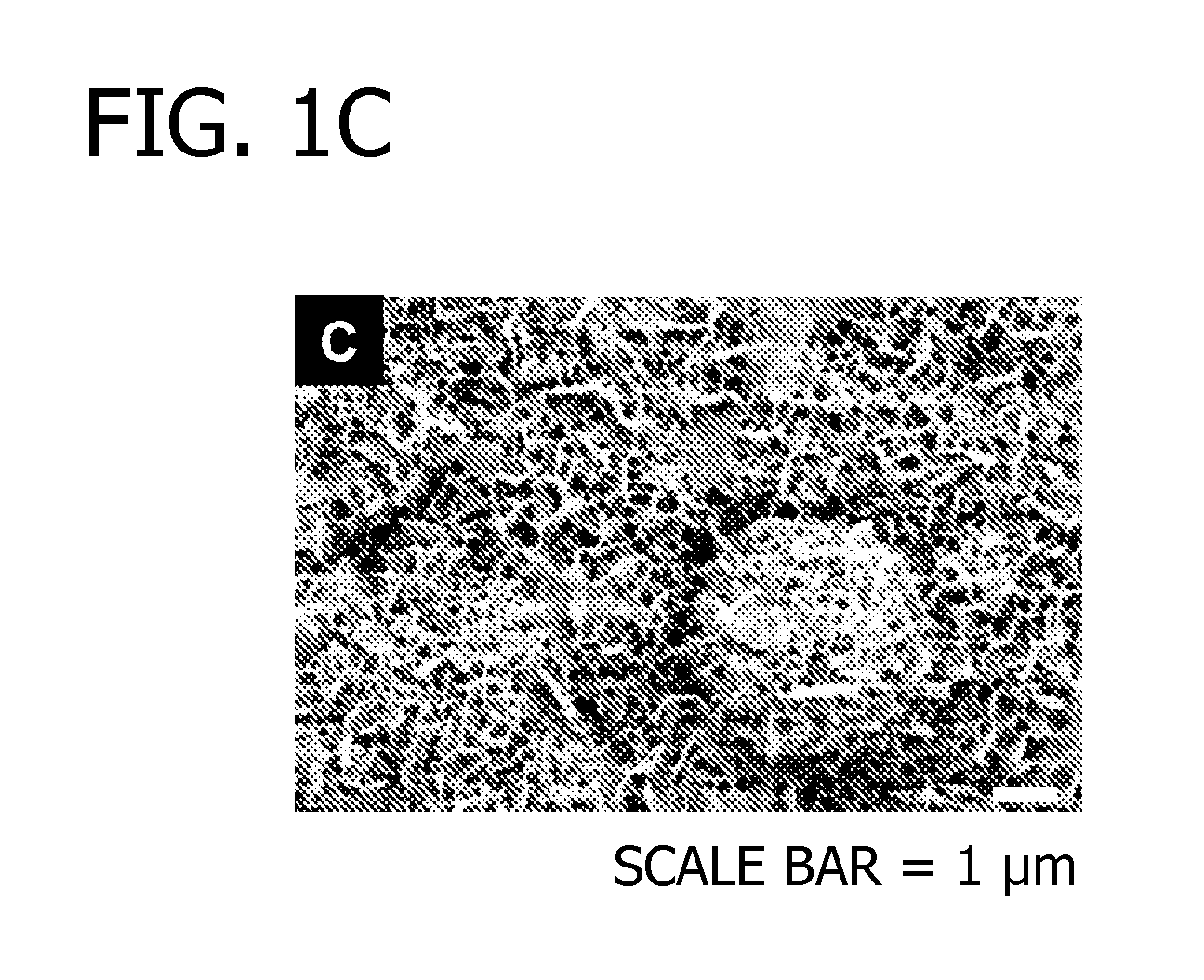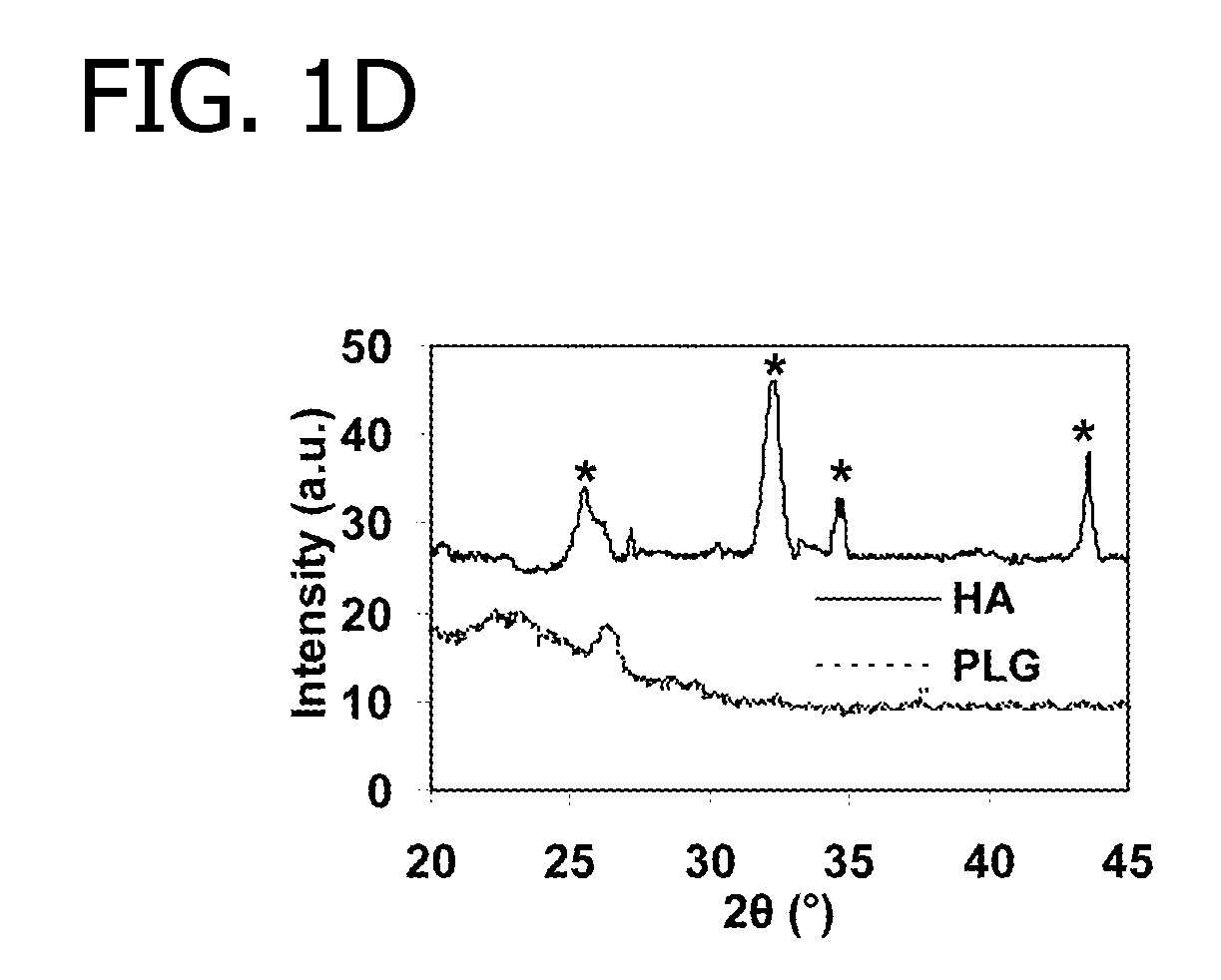Decorating hydroxyapatite biomaterials with modular biologically active molecules
a biological active molecule and biomaterial technology, applied in the direction of peptide/protein ingredients, osteogenic factors, peptide sources, etc., can solve the problems of suboptimal delivery kinetics, inability to actively induce new bone formation, and inability to induce differentiation of stem cells into bone-forming cells, etc., to achieve improved non-covalent binding and high affinity
- Summary
- Abstract
- Description
- Claims
- Application Information
AI Technical Summary
Problems solved by technology
Method used
Image
Examples
example 1
[0072]In this Example, modular peptides are synthesized and used to coat a HA-based biomaterial. The binding efficiency and subsequent release of the modular peptides from the biomaterial is then analyzed. Additionally, the bioactivity of the biomolecule-derived portion used in the modular peptide is analyzed.
Synthesis and Purification of Modular Growth Factors
[0073]To begin, multiple modular peptides (Table 2) were synthesized by solid-phase peptide synthesis on Fmoc-Rink Amide MBHA resin with Fmoc-protected α-amino groups via peptide synthesizer (CS Bio, Menlo Park, Calif.). The side-chain-protecting groups used were: t-butyl for Tyr, Thr and Ser; 2,2,5,7,8-pentamethyl-chroman-6-sulfonyl for Arg; t-BOC for Lys; and t-butyl ester for Gla and Glu. In some cases, 5(6)-FAM (5(6)-carboxyfluorescein, Sigma) was conjugated to the N-terminal lysine residue to characterize binding and release kinetics of modular growth factors on HA-coated polylactide-co-glycolide (PLG) films. The resultin...
example 2
[0091]In this Example, modular peptides are synthesized and used to coat a HA-based biomaterial. The binding behavior and bioactivity of the modular peptides is then analyzed.
[0092]Specifically, modular peptides (Table 3) were synthesized and analyzed using the methods described in Example 1.
[0093]
TABLE 3Sequences of modular peptide growthfactors and natural template.PeptideAmino Acid SequenceHuman OCNγEPPRγEVCγEL (AAs: 17-25) (SEQ ID NO: 20)VEGF helical KVKFMDVYQRSYCHP (AAs: 14-28) region(SEQ ID NO: 22)VEGF mimic*KLTWQELYQLKYKGI (SEQ ID NO: 23)VEGF-OCNKLTWQELYQLKYKGI-GGGAAAA-γEPRRγEVAγEL(SEQ ID NO: 18)*First synthesized by Pedon, et al., inspired by the VEGF helical region (AAs: 14-25), PNAS, 102(4): 14215-14220 (2005).
[0094]The molecular characteristics of the synthesized modular peptides are shown in FIGS. 7A-7C. The HPLC, MALDI-TOF and CD spectra confirmed that the peptide is successfully synthesized, bearing partial α-helical structure.
[0095]The binding behavior of the peptides...
PUM
| Property | Measurement | Unit |
|---|---|---|
| pH | aaaaa | aaaaa |
| temperature | aaaaa | aaaaa |
| pH | aaaaa | aaaaa |
Abstract
Description
Claims
Application Information
 Login to View More
Login to View More - R&D
- Intellectual Property
- Life Sciences
- Materials
- Tech Scout
- Unparalleled Data Quality
- Higher Quality Content
- 60% Fewer Hallucinations
Browse by: Latest US Patents, China's latest patents, Technical Efficacy Thesaurus, Application Domain, Technology Topic, Popular Technical Reports.
© 2025 PatSnap. All rights reserved.Legal|Privacy policy|Modern Slavery Act Transparency Statement|Sitemap|About US| Contact US: help@patsnap.com



